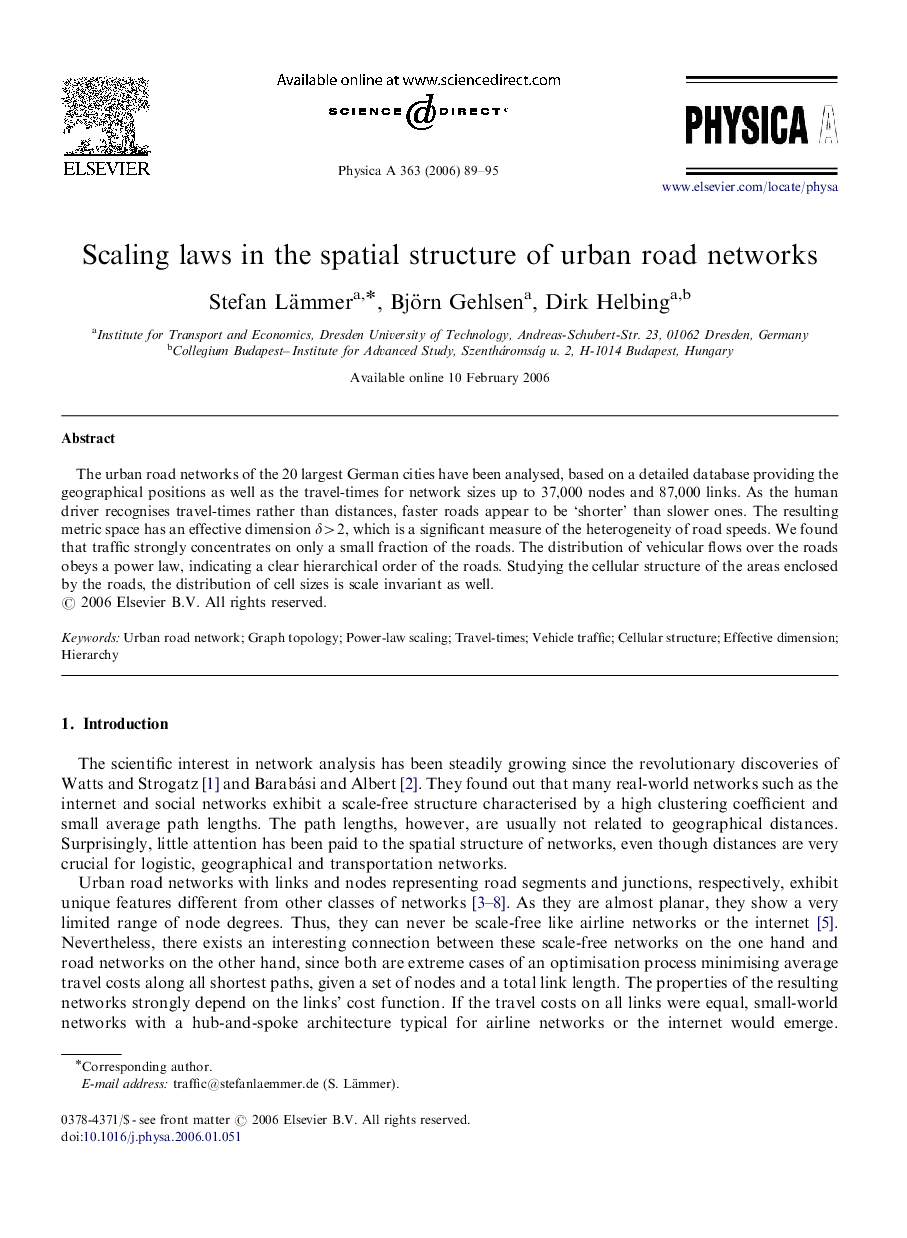| Article ID | Journal | Published Year | Pages | File Type |
|---|---|---|---|---|
| 979294 | Physica A: Statistical Mechanics and its Applications | 2006 | 7 Pages |
The urban road networks of the 20 largest German cities have been analysed, based on a detailed database providing the geographical positions as well as the travel-times for network sizes up to 37,000 nodes and 87,000 links. As the human driver recognises travel-times rather than distances, faster roads appear to be ‘shorter’ than slower ones. The resulting metric space has an effective dimension δ>2δ>2, which is a significant measure of the heterogeneity of road speeds. We found that traffic strongly concentrates on only a small fraction of the roads. The distribution of vehicular flows over the roads obeys a power law, indicating a clear hierarchical order of the roads. Studying the cellular structure of the areas enclosed by the roads, the distribution of cell sizes is scale invariant as well.
